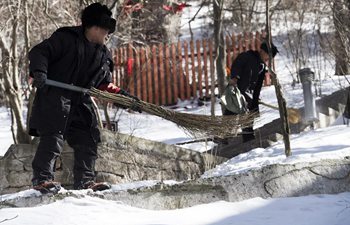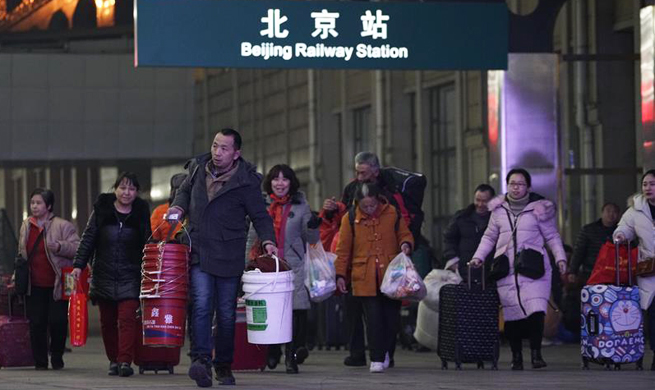SHENZHEN, Feb. 1 (Xinhua) -- Several wild leopard cats have been spotted in the downtown area of Shenzhen City since May. The arrival of the animals was a surprise for local residents, but also a cause of concern.
The wild leopard cats were found in Tanglang Mountain in the center of the booming city in south China's Guangdong Province.
"The arrival of the wild animals indicates the environment in the city is getting better. However, the forest area in the mountain only covers 20 square kilometers, which is unable to inhabit more leopard cats," said Guo Qiang, an employee of the city's wild animal protection office.
"The rapid development of Shenzhen, including the increase of roads and buildings, leads to the fragmentation of forest, as well as the isolation of wild animals' habitat in the city," Guo said.
Futian mangrove natural reserve in the coast of the city used to be developed into commercial districts. Thanks to efforts of the local government and other parties, the region has been retained. Migrant birds from cold areas visit the reserve in the winter.
"It is necessary to keep some green land for our offspring in the long run," said Li Ming, an official with the city's forestry department. Shenzhen has effectively constrained chaotic urban sprawl by drawing red lines and enhancing environmental protection measurements in recent years.
The current environment of Shenzhen mirrors the situation in most cities across the country.
With increased urbanization, the cities have seen a growing urban population and skyscrapers. The ecology of the cities now faces great challenges.
"China needs to enhance forestation in cities. Those fragmented woodlands and forest, scattered in the cities, should be connected, so as to strengthen the ecological relationship between cities," Guo said.
The State Forestry Bureau held a meeting last Friday in Shenzhen, saying that the country would speed up the construction of forest city groups. Six national forest city groups will be built across China by 2020.
The six groups cover the Pearl River Delta in south China, Beijing-Tianjin-Hebei region, the Yangtze River Delta, Changsha-Zhuzhou-Xiangtan in central Hunan Province, the central plains, northwestern Shaanxi and Gansu provinces.
Shenzhen is located in the Pearl River Delta, which has been established as the first "national forest city group pilot zone" in China in 2016.
Nine cities, including Guangzhou, Huizhou and Shenzhen, have been listed in the pilot zone. Among those, seven have been built into national forest cities, while Shenzhen and Zhongshan have been making efforts to achieve the goal.
To become a national forest city in China requires meeting about 40 standards, including the size and the quality of forest, as well as the role it plays in citizens' lives, said Wang Cheng, an expert at Chinese Academy of Forestry.
Cities, which have become national forest cities, will be reviewed every three years by relevant departments. The title could be withdrawn if it fails to meet standards.
By the end of 2016, the forest area of Shenzhen was nearly 69,000 hectares, and its forest coverage rate was 41 percent. In 2017, the city built up and refurbished 59 natural parks, multi-functional parks and community parks, increasing the number of parks in the city to 942.
In addition, the city plans to build 11 "eco-passages" to link up all the fragmented natural parks, natural reserves, forests and woodland in the city, so as to create a completed network for wild animals' migration, such as the wild leopard cats.
"Forestation in the city and eco-passages will be vital to connect regional natural eco-systems," said Zhang Jianlong, director of the State Forestry Bureau.
The details of the eco-passages are currently being devised.
















